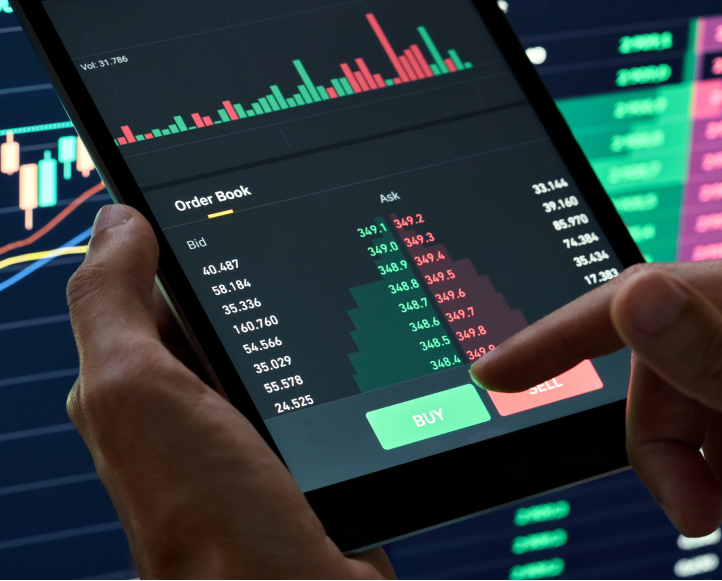
Exploring Crypto Trading Technical Tools: A Comprehensive Guide
In the fast-paced and often volatile world of cryptocurrency trading, technical analysis has become an indispensable tool for traders seeking to optimize their strategies. Technical tools assist traders in making informed decisions by analyzing historical price data, trends, and market patterns. In this article, we will explore various crypto trading technical tools that every trader should be aware of. Additionally, you can explore more about trading strategies Crypto Trading Technical Tools https://www.carlagericke.com/tag/alcohol-free/page/2/.
1. Understanding Technical Analysis
Technical analysis is the study of past price movements to forecast future market behavior. It primarily relies on charts and statistical indicators rather than the fundamentals of a cryptocurrency. Traders use various tools to analyze trends, identify patterns, and make predictions about future price movements. This method is particularly useful in the highly volatile environment of cryptocurrency markets where sentiment can change rapidly.
2. Candlestick Charts
One of the most popular methods of visualizing price data is through candlestick charts. Each candlestick represents a specific time period (e.g., one minute, one hour, one day) and shows four key data points: open, close, high, and low prices. Candlestick patterns can signal bullish or bearish market sentiments. For instance, a series of white or green candles indicates upward momentum, while dark or red candles could suggest a downtrend.
3. Moving Averages
Moving averages (MA) are crucial tools for identifying trends. They smooth out price data by creating a constantly updated average price. The two most common types of moving averages are the Simple Moving Average (SMA) and the Exponential Moving Average (EMA). Traders often look for “crossover” signals, where a short-term MA crosses above a long-term MA (bullish signal) or below (bearish signal).
4. Relative Strength Index (RSI)
The Relative Strength Index (RSI) is a momentum oscillator that measures the speed and change of price movements. RSI values range from 0 to 100, typically using the 70 and 30 thresholds to indicate overbought or oversold conditions, respectively. An RSI above 70 might suggest that a cryptocurrency is overbought and could be due for a correction, while an RSI below 30 indicates an oversold condition that might lead to a price rebound.
5. Bollinger Bands
Bollinger Bands consist of a middle band (SMA) and two outer bands (standard deviations away from the SMA). These bands can help traders identify volatility and potential price breakouts. When the price moves closer to the upper band, it may indicate an overbought condition, and conversely, when the price approaches the lower band, it may signal an oversold condition. Traders often look for opportunities to buy or sell based on these interactions.

6. Volume Indicators
Volume is a vital element in crypto trading, as it helps confirm trends and signals. High trading volumes often accompany price movements, indicating strength behind a price change. Tools like the On-Balance Volume (OBV) or the Volume Oscillator allow traders to assess buying and selling pressure, aiding in the identification of potential trend reversals.
7. MACD (Moving Average Convergence Divergence)
The MACD is a trend-following momentum indicator that shows the relationship between two moving averages of a security’s price. The MACD is calculated by subtracting the 26-period EMA from the 12-period EMA. The result is the MACD line; a nine-day EMA of the MACD line serves as a signal line. Traders look for crossovers of these lines to identify potential buy or sell signals.
8. Fibonacci Retracement
Fibonacci retracement levels are horizontal lines that indicate potential support and resistance levels based on the Fibonacci sequence. Traders use these levels to identify areas where the price might reverse or stall after a significant move. The key Fibonacci retracement levels are 23.6%, 38.2%, 50%, 61.8%, and 100%. This tool combines psychological levels with mathematical relationships, making it popular among traders.
9. Trend Lines and Channels
Drawing trend lines can visually represent the current market trend. An upward trend line connects higher lows, while a downward trend line connects lower highs. Channels are formed by creating parallel lines above and below a trend line. These tools can help traders identify potential entry and exit points by observing when prices bounce off these lines or break through them.
10. Conclusion
The cryptocurrency market is both rewarding and risky, making the use of technical tools essential for traders aiming to maximize their profits while minimizing losses. By integrating tools such as candlestick charts, moving averages, and various indicators into their trading strategy, traders can better analyze market conditions and make informed decisions. However, it is crucial to remember that no tool is foolproof, and successful trading also requires discipline, continuous learning, and risk management.
As you delve deeper into crypto trading, keep experimenting with different technical tools to find a combination that suits your trading style. The right tools, when applied correctly, can transform your trading experience and provide insights that lead to greater success in the exciting realm of cryptocurrency trading.

